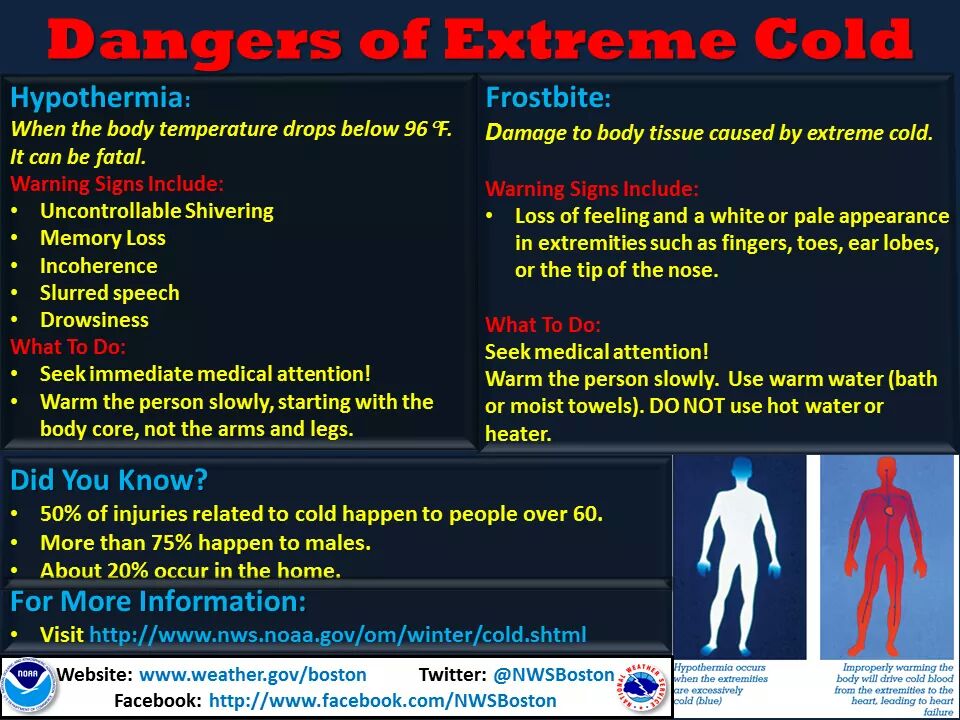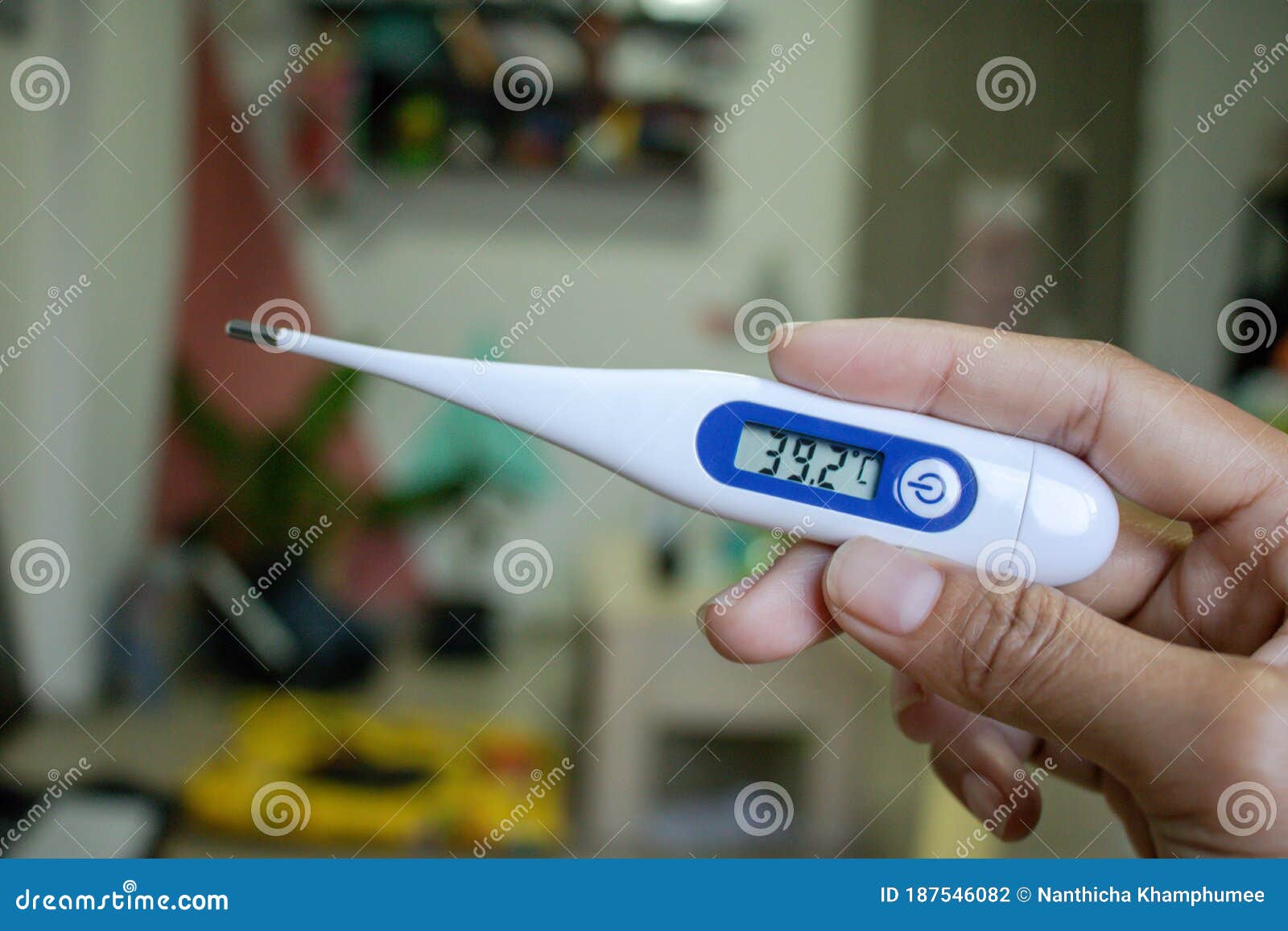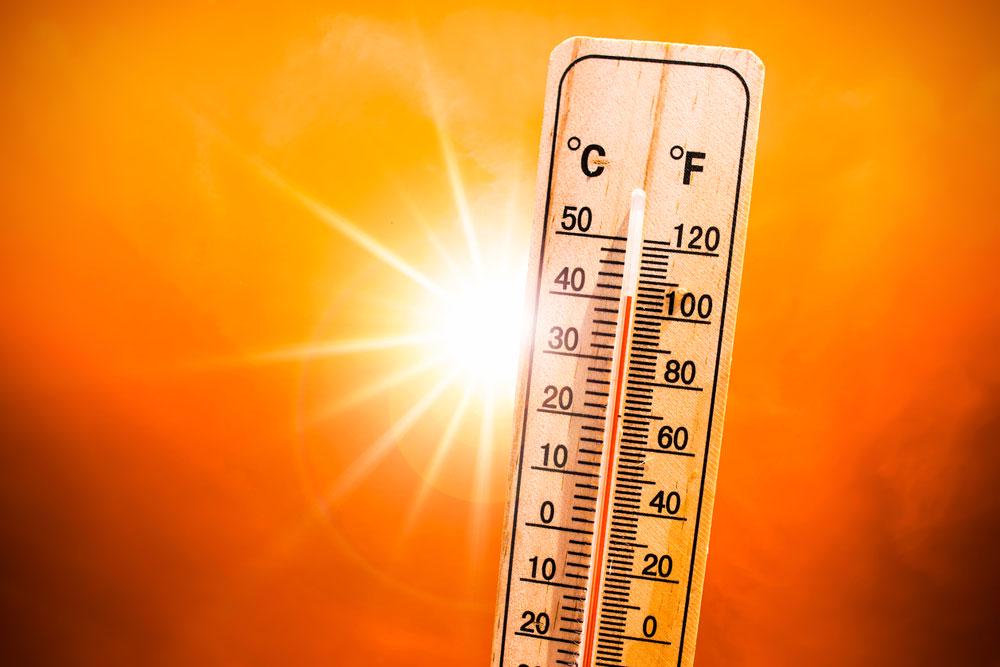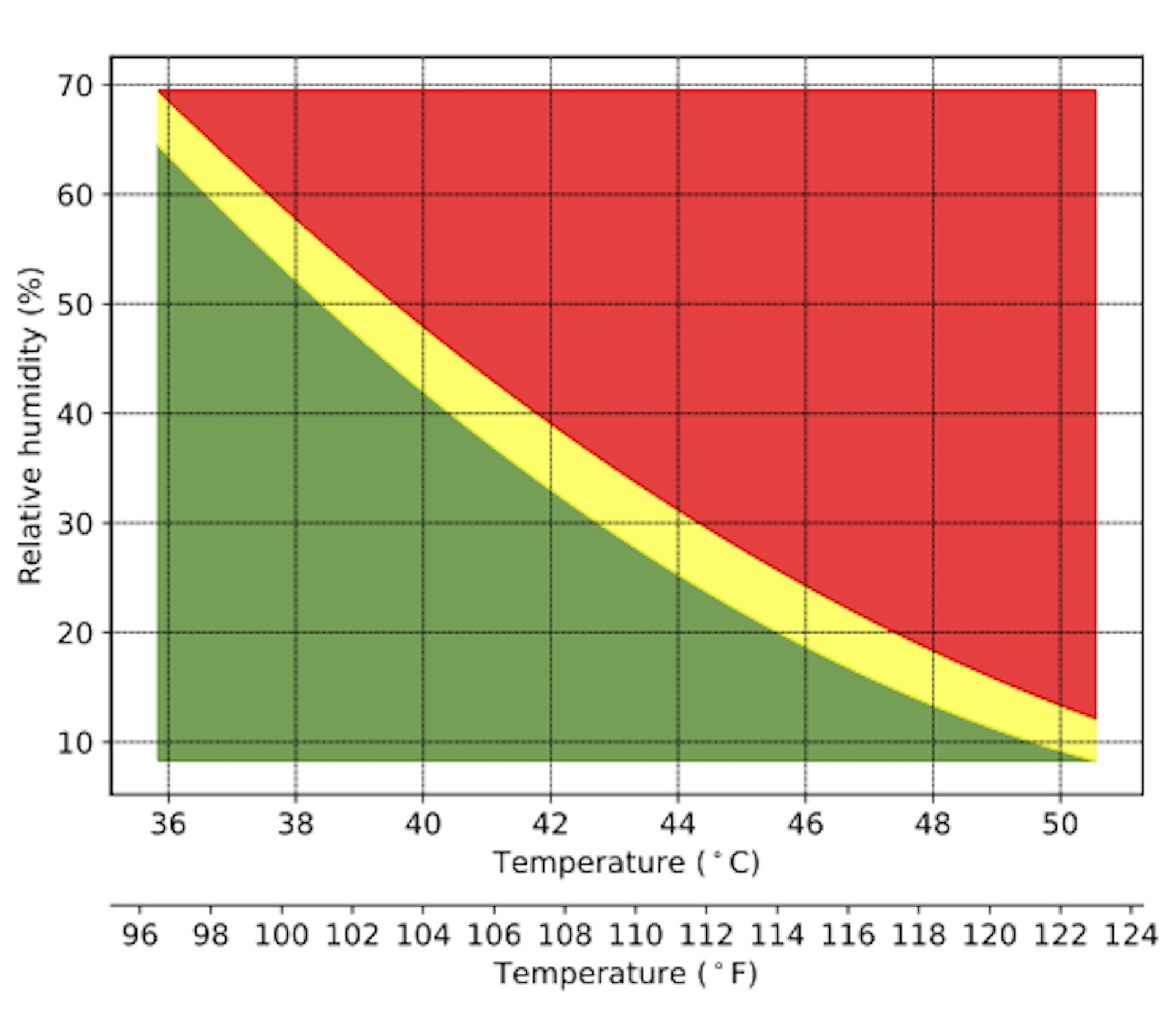Dangerous body temps. Dangerous Body Temperatures: Understanding Fever Thresholds and Management
How high can a fever go before it becomes dangerous. What are the normal body temperature ranges for adults and children. When should you seek medical attention for a fever. How can you accurately measure body temperature at home. What are the most effective ways to reduce a fever.
The Basics of Body Temperature Regulation
Body temperature is a crucial indicator of health, reflecting the body’s ability to generate and dissipate heat. The human body is remarkably adept at maintaining a stable internal temperature, even when faced with significant external temperature fluctuations. This process, known as thermoregulation, involves complex mechanisms that work together to keep the body’s core temperature within a safe range.
When the body becomes too warm, blood vessels in the skin dilate, allowing more blood to flow near the surface and release excess heat. Simultaneously, sweat glands activate, producing perspiration that evaporates from the skin, further cooling the body. Conversely, when the body is too cold, blood vessels constrict to conserve heat, and shivering may occur to generate additional warmth through muscle movement.

Normal Body Temperature Ranges
What is considered a normal body temperature? The widely accepted average body temperature is 37°C (98.6°F), but this can vary slightly from person to person and throughout the day. Generally, a normal body temperature range falls between 36.1°C to 37.2°C (97°F to 99°F). It’s important to note that body temperature tends to be lowest in the early morning and highest in the late afternoon or evening.
- Oral temperature: 36.8°C (98.2°F)
- Rectal temperature: 37.3°C (99.1°F)
- Axillary (armpit) temperature: 36.4°C (97.6°F)
- Ear (tympanic) temperature: 37°C (98.6°F)
Defining Fever: When Body Temperature Rises
A fever is generally defined as a body temperature above the normal range. For adults, this typically means a temperature of 38°C (100.4°F) or higher. In children, the threshold may vary depending on the method of measurement:
- Rectal temperature: 38°C (100.4°F) or higher
- Oral temperature: 37.8°C (100°F) or higher
- Axillary (armpit) temperature: 37.2°C (99°F) or higher
Is a slight elevation in temperature always cause for concern? Not necessarily. Low-grade fevers (between 38°C and 39°C or 100.4°F and 102.2°F) are often the body’s natural response to fighting off infections and may not require medical intervention.

The Danger Zone: High Fever Thresholds
While fevers are often beneficial in combating infections, excessively high body temperatures can be dangerous. At what point does a fever become a medical emergency? Generally, temperatures above 40°C (104°F) are considered high fevers and may require immediate medical attention, especially if accompanied by other severe symptoms.
Fever Danger Thresholds by Age
- Adults: 39.4°C (103°F) or higher
- Children (3 months to 3 years): 39.4°C (103°F) or higher
- Infants (0-3 months): 38°C (100.4°F) or higher (requires immediate medical attention)
Why are high fevers dangerous? Extremely high body temperatures can lead to complications such as dehydration, seizures, and in rare cases, organ damage. Moreover, very high fevers may indicate a severe underlying condition that requires prompt medical evaluation and treatment.
Accurate Temperature Measurement Techniques
Obtaining an accurate body temperature reading is crucial for assessing fever and overall health. Various methods and devices are available for measuring body temperature, each with its own advantages and considerations.

Oral Temperature Measurement
Taking an oral temperature is one of the most common methods for adults and children over 5 years old. How can you ensure an accurate oral temperature reading?
- Wait at least 20-30 minutes after eating, drinking, or smoking before taking the temperature.
- Place the thermometer under the tongue, slightly to one side of the center.
- Keep the lips closed around the thermometer for the required time (usually until the device beeps for digital thermometers).
- Read and record the temperature.
Rectal Temperature Measurement
Rectal temperature readings are considered the most accurate, especially for infants and young children. How should you take a rectal temperature safely?
- Apply a small amount of lubricant to the thermometer tip.
- Gently insert the thermometer about 1.25 to 2.5 cm (0.5 to 1 inch) into the rectum.
- Hold the thermometer in place until the reading is complete.
- Carefully remove and clean the thermometer thoroughly after use.
Other Temperature Measurement Methods
Additional methods for measuring body temperature include:

- Axillary (armpit) measurements
- Tympanic (ear) thermometers
- Temporal artery (forehead) thermometers
Each method has its own specific instructions and considerations for accuracy. It’s important to follow the manufacturer’s guidelines for your specific thermometer type.
Fever Management: When and How to Intervene
While fevers often serve a beneficial purpose in fighting infections, there are times when intervention is necessary. How can you effectively manage a fever at home, and when should you seek medical help?
Home Fever Management Techniques
- Rest and hydration: Encourage plenty of fluids to prevent dehydration.
- Cool compresses: Apply a cool, damp cloth to the forehead, wrists, and back of the neck.
- Lightweight clothing: Dress in light, breathable fabrics to allow heat to escape.
- Room temperature: Keep the environment comfortably cool, but avoid excessive cold.
- Over-the-counter medications: Use fever-reducing medications like acetaminophen or ibuprofen as directed.
When to Seek Medical Attention
Certain circumstances warrant immediate medical evaluation for a fever:

- Infants under 3 months with any fever
- Children with a fever lasting more than 3 days
- Adults with a fever above 39.4°C (103°F) or lasting more than 3 days
- Fever accompanied by severe headache, stiff neck, confusion, or difficulty breathing
- Fever in individuals with compromised immune systems or chronic health conditions
Understanding Fever’s Role in Immune Response
Fever is often viewed negatively, but it plays a crucial role in the body’s defense against infections. How does an elevated body temperature contribute to fighting off pathogens?
The Benefits of Fever
- Enhanced immune function: Higher temperatures can increase the activity of white blood cells and other immune components.
- Slowed pathogen growth: Many bacteria and viruses struggle to reproduce at higher temperatures.
- Increased metabolism: A faster metabolism can help the body process and eliminate toxins more efficiently.
Does this mean all fevers should be left untreated? Not necessarily. While moderate fevers can be beneficial, high fevers or those causing significant discomfort may require intervention to prevent complications and ensure patient comfort.

Special Considerations: Fevers in Different Populations
Fever assessment and management can vary depending on the individual’s age, health status, and other factors. How do these considerations affect fever evaluation and treatment?
Infants and Young Children
Fevers in infants and young children require special attention due to their developing immune systems and inability to communicate symptoms effectively. Parents and caregivers should be vigilant for signs of serious illness, such as:
- Lethargy or unresponsiveness
- Persistent vomiting or diarrhea
- Signs of dehydration (dry mouth, no tears when crying, reduced urine output)
- Unusual rashes or skin discoloration
Elderly Individuals
Older adults may not exhibit typical fever symptoms, and their baseline body temperature may be lower than average. Caregivers should be aware of subtle changes that might indicate infection or illness, such as:
- Confusion or changes in mental status
- Weakness or falls
- Loss of appetite
- Rapid breathing or heart rate
Immunocompromised Individuals
People with weakened immune systems, such as those undergoing chemotherapy or with HIV/AIDS, may not mount a typical fever response to infection. Any elevation in temperature, even if not meeting the standard definition of fever, should be taken seriously and evaluated by a healthcare professional.

Fever Myths and Misconceptions
Despite the wealth of medical knowledge available, many myths and misconceptions about fever persist. Let’s address some common misunderstandings:
Myth: Fever is always harmful and must be treated aggressively.
Reality: Moderate fevers are often beneficial and help the body fight infections. Treatment should focus on comfort and preventing complications rather than eliminating the fever entirely.
Myth: The height of a fever always indicates the severity of the illness.
Reality: While very high fevers can be concerning, the degree of fever doesn’t always correlate directly with the severity of the underlying condition. Some serious infections may cause only a low-grade fever or no fever at all.
Myth: Fever can cause brain damage.
Reality: Fever alone rarely causes brain damage. Most fevers caused by infections don’t exceed 40.5°C (105°F), which is below the temperature at which brain damage could occur. However, extremely high fevers (above 41.5°C or 107°F) can be dangerous and require immediate medical attention.

Myth: Bundling up helps “break” a fever.
Reality: Excessive bundling can actually make a fever worse by preventing heat dissipation. Dress comfortably in lightweight clothing and maintain a cool, comfortable environment.
By understanding these facts about fever, individuals can make informed decisions about when to seek medical care and how to manage fever symptoms effectively at home. Remember, while fever can be a helpful immune response, it’s essential to monitor temperature closely and consult with healthcare professionals when in doubt about the appropriate course of action.
Body Temperature | HealthLink BC
Test Overview
Body temperature is a measure of how well your body can make and get rid of heat. The body is very good at keeping its temperature within a safe range, even when temperatures outside the body change a lot.
- When you are too hot, the blood vessels in your skin widen to carry the excess heat to your skin’s surface. You may start to sweat. As the sweat evaporates, it helps cool your body.
- When you are too cold, your blood vessels narrow. This reduces blood flow to your skin to save body heat. You may start to shiver. When the muscles tremble this way, it helps to make more heat.
Your body temperature can be measured in many places on your body. The most common ones are the mouth, the ear, the armpit, and the rectum. Temperature can also be measured on your forehead.
The most common ones are the mouth, the ear, the armpit, and the rectum. Temperature can also be measured on your forehead.
Thermometers show body temperature in either degrees Celsius (°C) or degrees Fahrenheit (°F). The standard in Canada and most other countries is degrees Celsius. In the United States, temperatures are often measured in degrees Fahrenheit.
Why It Is Done
Body temperature is measured to:
- Check for fever.
- Check for a very low body temperature in people who have been exposed to cold.
- Check for a very high body temperature in people who have been exposed to heat.
- Find out how well a fever-reducing medicine is working.

- Help a woman plan for pregnancy by finding out if she is ovulating.
How To Prepare
Take your temperature a few times when you are well. This will help you find out what is normal for you. Check your temperature in both the morning and evening. Body temperature can vary by as much as 0.6°C (1°F) during the day.
Before you take your temperature:
- Wait at least 20 to 30 minutes after you smoke, you eat, or you drink a hot or cold liquid.
- Wait at least an hour after hard exercise or a hot bath.
Glass thermometers that contain mercury aren’t recommended. If you have a glass thermometer, contact your local health unit to find out how to dispose of it safely. If you break a glass thermometer, call your local poison control centre right away.
If you have a glass thermometer, contact your local health unit to find out how to dispose of it safely. If you break a glass thermometer, call your local poison control centre right away.
How It Is Done
Oral (by mouth) temperature
Oral (by mouth) is the most common method of taking a temperature. This method can be used for children who are older than 5 years of age. For you to get an accurate reading, the person must be able to breathe through their nose. If they can’t, then use the rectum, ear, or armpit to take the temperature.
Before you take a temperature, read the instructions for how to use your type of thermometer.
- Place the thermometer under the tongue, just to one side of the centre.
Ask the person to close their lips tightly around it.
- Leave the thermometer in place for the required amount of time.
Time yourself with a clock or watch. Some digital thermometers give a series of short beeps when the reading is done.
- Remove the thermometer, and read it.
- Clean the thermometer.
Clean a digital thermometer with cool, soapy water, and rinse it off before you put it away.
Rectal temperature
This is the most accurate way to measure body temperature. It’s recommended for babies , small children, and people who can’t hold a thermometer safely in their mouths. Use a rectal thermometer only if you are comfortable doing so. It’s also used when it is very important to get the most accurate reading. Don’t use a thermometer to take an oral temperature after it has been used to take a rectal temperature.
Use a rectal thermometer only if you are comfortable doing so. It’s also used when it is very important to get the most accurate reading. Don’t use a thermometer to take an oral temperature after it has been used to take a rectal temperature.
Before you take a temperature, read the instructions for how to use your type of thermometer.
- Apply a lubricant jelly or petroleum jelly, such as Vaseline, on the bulb of the thermometer.
This will make it easy to insert.
- With a baby or small child, place them safely on their stomach on your lap or a comfortable surface. If a baby is unable to safely lie on their stomach, place them on their back.
Choose a quiet place so that the child won’t be distracted or move around too much.

- Insert the thermometer.
- Spread the child’s buttocks with one hand. With the other hand, gently insert the bulb end of the thermometer into the anus.
- Push it in about 1.25 cm (0.5 in.) to 2.5 cm (1 in.). Don’t force it into the rectum.
- Hold the thermometer in place with two fingers close to the anus (not near the end of the thermometer).
- Leave the thermometer in place for the required amount of time.
Time yourself with a watch or clock. Some digital thermometers give a series of short beeps when the reading is done.
- Remove the thermometer and read it.
- Clean a digital thermometer with cool, soapy water and rinse it off before you put it away.
Armpit temperature
Taking a temperature in the armpit may not be as accurate as taking an oral or rectal temperature.
Before you take a temperature, read the instructions for how to use your type of thermometer.
- Place the thermometer under the arm, with the bulb in the centre of the armpit.
- Press the arm against the body, and leave the thermometer in place for the required amount of time.
Time yourself with a watch or clock.
- Remove the thermometer and read it.
- Clean a digital thermometer with cool, soapy water and rinse it off before you put it away.
Ear temperature
This method is recommended for children older than 2 years. Ear thermometers may need to be cleaned before they are used.
Ear thermometers may need to be cleaned before they are used.
Before you take a temperature, read the instructions for how to use your type of thermometer.
- Check that the probe is clean and free of debris.
If dirty, wipe it gently with a clean cloth. Do not put the thermometer underwater.
- To keep the probe clean, use a disposable probe cover.
Use a new cover each time you take an ear temperature.
- Turn on the thermometer, and gently pull the earlobe back.
- This will help you place the probe in the ear canal.
- Centre the probe tip in the ear, and push gently inward toward the eardrum.
Do not force it in.
- Press the “on” button to display the temperature reading.

- Remove the thermometer, and throw away the used probe cover.
Temporal artery temperature
Before you take a temperature, read the instructions for how to use your type of thermometer.
- Remove the cap over the cup part of the thermometer, if it has a cap.
- Turn on the thermometer.
- Place the thermometer cup on the skin in the centre of the forehead.
Make sure nothing is between the thermometer cup and the skin.
- Press the button for making a measurement.
- Slide the thermometer across the forehead to one side (not up or down).
- Listen for a sound.
Most of these thermometers make a beep or other sound when they are ready to read.

- Remove the thermometer from the forehead, and read the temperature.
Forehead temperature
Before you take a temperature, read the instructions for how to use your type of thermometer.
- Press the entire plastic strip firmly against a dry forehead.
- Hold the strip in place for the required amount of time.
Time yourself with a watch or clock.
- Read the temperature before removing the thermometer.
- Clean the thermometer with cool soapy water and rinse it off before you put it away.
How It Feels
Taking an oral temperature causes only mild discomfort. You have to keep the thermometer under your tongue and hold it in place with your lips.
You have to keep the thermometer under your tongue and hold it in place with your lips.
Taking a rectal temperature can cause a little discomfort, but it should not be painful.
Taking an ear temperature causes little or no discomfort. The probe is not inserted very far into the ear, and it gives a reading in only a few seconds.
Taking a temporal artery, forehead, or armpit temperature does not cause any discomfort.
Risks
There is very little chance of having a problem from this test.
When taking a rectal temperature, do not push the thermometer in more than 1. 25 cm (0.5 in.) to 2.5 cm (1 in.). Pushing it farther can be painful and may damage the rectum.
25 cm (0.5 in.) to 2.5 cm (1 in.). Pushing it farther can be painful and may damage the rectum.
Results
If you tell your doctor about your temperature reading, be sure to say where it was taken: on the forehead or in the mouth, rectum, armpit, or ear.
Normal: | The average normal temperature is 37°C (98.6°F). But that may not be normal for you. Your temperature also changes during the day. It is usually lowest in the early morning. It may rise as much as 0.6°C (1°F) in the early evening. Your temperature may also rise by 0.6°C (1°F) or more if you exercise on a hot day. A woman’s body temperature often changes by 0. |
|---|---|
Abnormal: | Ear or rectal temperature
Infants less than 3 months with a rectal temperature of 38°C(100.4°F) or higher should be evaluated |
Oral or armpit temperature
| |
A rectal or ear temperature of less than 36.1°C (97°F) is a low body temperature (hypothermia). |
Comparing temperature types
You can take a temperature using the mouth (oral), anus (rectal), armpit (axillary), or ear (tympanic). But the temperature readings vary depending on which one you use. And you need an accurate measurement to know if a fever is present.
But the temperature readings vary depending on which one you use. And you need an accurate measurement to know if a fever is present.
Medical research hasn’t found an exact correlation between oral, rectal, ear, armpit, and forehead temperature measurements. In general, a forehead (temporal) scanner is usually 0.3 C (0.5 F) to 0.6 C (1 F) lower than an oral temperature.
Credits
Normal Body Temperature Range By Age – Forbes Health
You may have heard that “normal” body temperature is always 98.6 degrees Fahrenheit. But in reality, what’s considered a normal body temperature can vary from person to person, and each individual can have a range of temperatures that are normal for them.
Many factors play a role in determining typical body temperature, such as body size and age. Here’s a closer look at what constitutes “normal” body temperature, including how that range varies by age group and when a spike in body temperature is considered a fever.
FEATURED PARTNER OFFER
Partner Offers feature brands who paid Forbes Health to appear at the top of our list. While this may influence where their products or services appear on our site, it in no way affects our ratings, which are based on thorough research, solid methodologies and expert advice. Our partners cannot pay us to guarantee favorable reviews of their products or services
Oxiline Therma 9 Pro Thermometer
- 12 Month Battery Life
- In-ear mode for better accuracy
- Read your surface temp in less than 1 second
- Store up to 20 temperature measurements on the device memory
- Measure skin, room or object temperature quickly and accurately with the touchless infrared light
Shop Now
On Oxiline’s Website
What Is Body Temperature?
Body temperature is among the core vital signs that indicates how well the body is functioning. Specifically, body temperature is a measurement of how well the body is producing and eliminating heat. The body strictly maintains its temperature through thermoregulation, which helps return your body to homeostasis, or the balance in the body’s systems required for survival and daily functioning.
The body strictly maintains its temperature through thermoregulation, which helps return your body to homeostasis, or the balance in the body’s systems required for survival and daily functioning.
Normal Body Temperature by Age
As mentioned, what’s considered normal body temperature can vary by age. In general, for older children (around ages 11 and up) and adults, body temperature typically falls between 97.5 and 99.5 degrees Fahrenheit (36.4 and 37.4 degrees Celsius)[1]Fever. Cedars Sinai. Accessed 01/03/2023. .
Infants, meanwhile, can see a larger swing in temperatures from the aforementioned range. Often they aren’t able to regulate their body temp as much as older children and adults can, so, in infants, sometimes you can see a range of temperature from 96 to 99. 5 degrees Fahrenheit [35.5 to 37.4 degrees Celsius], says Kitty O’Hare, M.D., a pediatrician at Duke Health based in Cary, North Carolina. It is important to note that this is why infants are at a higher risk for heat stroke when the weather is hot or when they’re inside a hot car.
5 degrees Fahrenheit [35.5 to 37.4 degrees Celsius], says Kitty O’Hare, M.D., a pediatrician at Duke Health based in Cary, North Carolina. It is important to note that this is why infants are at a higher risk for heat stroke when the weather is hot or when they’re inside a hot car.
How to Take Your Temperature
There are a number of different ways to take your body temperature including:
- Rectal thermometer
- Axillary (armpit) thermometer
- Oral (mouth) thermometer
- Tympanic (ear) thermometer
- Temporal artery (forehead) thermometer
A rectal thermometer is “really the best way to get a temperature in an infant,” says Dr. O’Hare, and is often the preferred site among health care providers when your child is sick.
For older children, including kids who are able to cooperate with holding a thermometer in their mouth, an oral thermometer is usually a good bet, according to Dr. O’Hare. High-risk individuals, such as those who are immunocompromised, should talk to their health care provider about the best method of temperature taking.
Still, there are pros and cons to each temperature-taking method and, as Dr. O’Hare points out, there are “correct ways of using [thermometers]” in order to get reliable results. She emphasizes the importance of always following instructions on a thermometer’s packaging, and being aware of factors that could sway readings, particularly with forehead scannings, which can be affected by external temperatures.
What Can Cause Changes to Body Temperature?
It’s normal for body temperature to fluctuate. Causes of changes in body temperature include:
- Time of day (it’s usually lowest in early morning and highest in the evening)
- A person’s menstrual cycle (temperature typically increases in the second half of cycle)
- Physical activity
- Environment, including temperature and humidity
- Heavy clothing
- Medications
- Injuries to the skin’s surface, such as a severe burn
- Hormonal conditions
What Is Considered a Fever?
A temperature above 100. 4 degrees Fahrenheit is generally considered a fever, but for young children, that number can vary depending on what body part the temperature is taken from. A rectal temperature of 100.4 degrees Fahrenheit or higher is considered a fever, but an oral temperature of 99.5 degrees is also considered a fever. For an adult, a temperature above 99 or 99.5 degrees is likely a fever.
4 degrees Fahrenheit is generally considered a fever, but for young children, that number can vary depending on what body part the temperature is taken from. A rectal temperature of 100.4 degrees Fahrenheit or higher is considered a fever, but an oral temperature of 99.5 degrees is also considered a fever. For an adult, a temperature above 99 or 99.5 degrees is likely a fever.
Typically, a fever is caused by an infection, such as from a virus or bacteria. But rather than being a symptom of the disease itself, the fever is a sign that the body is fighting it off. “Fevers are a normal part of your body fighting off an infection. Most fevers in and of themselves are not dangerous,” says Dr. O’Hare. Rather, an increase in the body’s temperature stimulates the immune system to fight and may make it harder for the bacteria and viruses that cause infections to thrive.
Reliable Temperature Readings, Every Time
The Oxiline Therma 9 Pro thermometer is a reliable, accurate and user-friendly tool for monitoring body temperature and is equipped with non-contact measurement technology, which allows for quick and hygienic temperature readings.
Shop Now
What Are the Symptoms of a Fever?
According to Seth Blackshaw, Ph.D., a professor of neuroscience at Johns Hopkins School of Medicine in Baltimore, a fever is “largely about diverting energy from normal functions to the immune system.” Symptoms someone may experience with a fever can include:
- Red or flushed face
- Skin that feels warm to the touch
- Chills and shivering
- Sweating
- Lethargy
- Loss of hunger or thirst
- Achiness
- Dark urine, or low output of urine
- Headache
- Nausea or vomiting
- Constipation or diarrhea
When to Call a Doctor
When to involve a doctor can vary depending on the age of the individual who has a fever, according to Dr. O’Hare.
For infants who are under 2 months of age, for instance, Dr. O’Hare recommends calling your doctor if a temperature climbs to 100.4 degrees Fahrenheit or higher, as this can sometimes be a sign of something more serious. For children ages 3 and younger, it may be worth checking in with your doctor if their temperature goes above 102 degrees Fahrenheit, and 103 degrees Fahrenheit for children older than 3 years.
For children ages 3 and younger, it may be worth checking in with your doctor if their temperature goes above 102 degrees Fahrenheit, and 103 degrees Fahrenheit for children older than 3 years.
It also may be appropriate to call a doctor if the fever persists for a certain amount of time. For children under 2, call if a fever continues for more than 24 hours, while for children older than 2, calling the doctor may be appropriate after 72 hours of fever.
Dr. O’Hare also notes that it’s smart to reach out to a doctor if the person, regardless of age, is experiencing a fever and doesn’t seem to be acting right, noting that older adults in particular may experience confusion with a fever. Other signs indicating a call to a doctor is in order are if a person is having difficulty breathing, if the fever is persistent despite taking fever-reducing medications, if the person is unable to eat or drink enough to stay hydrated or is having trouble urinating.
While fevers can certainly be uncomfortable, and in some cases may be cause to call the doctor, Dr. O’Hare says, “typically your body will feel better soon after doing some self care like drinking extra fluids and getting extra rest.”
O’Hare says, “typically your body will feel better soon after doing some self care like drinking extra fluids and getting extra rest.”
Measuring Your Temperature Has Never Been Easier
Oxiline’s Therma 9 Pro aims to measure your temperature with great accuracy, and with 3 touchless modes and an in-ear mode, you have options.
Shop Now
On Oxiline’s Website
First aid procedure for elevated body temperature
Subfebrile temperature (up to 38°C)
1. Undress the child.
2. Wipe with a damp cloth (slightly above room temperature).
3. Do not use antipyretics.
Febrile temperature (above 38°C)
1. Ensure rest, put to bed.
2. Drink plenty of sweet tea, fruit drink.
3. In case of chills, warm the child (warm blanket, hot tea, heating pad to the limbs).
4. Give an antipyretic.
5. At a temperature of 39. 5-40°C, the child should not be wrapped.
5-40°C, the child should not be wrapped.
6. If the temperature is above 40.4°C, give an antipyretic and seek emergency help.
Specialist comments:
The normal temperature is not 36.6°C, as is often believed, but 36.0-37.0°C, in the evening it is slightly higher than in the morning. Body temperature rises with many diseases. The benefits of fever are a signal of illness, a way to deal with pathogens
(many bacteria and viruses stop multiplying at temperatures above 37-38°C), this is a stimulus for the immune response, since a number of protective factors (including interferon) are released only at temperatures above 38°C.
By lowering the fever, we do not affect the cause of the disease, but we can improve the child’s well-being.
Subfebrile temperature (up to 38°C) may occur with overheating, with a viral or bacterial infection. Taking antipyretics in such cases is not worth it if the child’s well-being does not suffer. At a “febrile” temperature (above 38 ° C), vasoconstriction, increased muscle contractions (hence chills, tremors), and in young children convulsions (the so-called “febrile” convulsions) are noted.
When the temperature rises to 39.5-40.0°C, the skin vessels dilate (the skin turns red), such a child should not be wrapped up. Fever is dangerous with spasm of skin vessels – this is malignant hyperthermia.
Symptoms:
temperature above 40.4°C;
variegated, marbled skin;
limbs cold to the touch;
It is necessary to call an emergency and be sure to give an antipyretic, preferably in a solution inside.
Children should be given antipyretics at temperatures above 38.0°C, but if the child does not tolerate high temperatures, worries, cries, or has seizures at elevated temperatures, antipyretics are given at temperatures above 37.5°C. After giving an antipyretic, you can not calm down: be sure to consult a doctor (for recovery, you will need to take other drugs).
The main antipyretic recommended for children is PARACETAMOL (acetaminophen). It does not have a pronounced side effect, has an anti-inflammatory and analgesic effect, relieves discomfort.![]()
Dose of paracetamol: 10-12 mg/kg of body weight per dose, 2-4 times a day (daily dose should not exceed 40 mg/kg of body weight). Oral paracetamol solution acts quickly – after 20-30 minutes. For a small child, it is better to use children’s dosage forms, for younger students they use paracetamol tablets of 0.2 g, for older students – 0.5 g each. CEFECON D candles are specially designed for children, they contain only paracetamol. The action of the candle begins in 30-60 minutes and lasts 5-6 hours.
Some antipyretic drugs have serious side effects, so they are not used in children: acetylsalicylic acid, analgin (under the supervision of a pediatrician).
What to do if the temperature persists at 37 °C
Likbez
Health
January 29
Probably nothing. But sometimes this temperature has frightening reasons that you need to know about.
First things first: a temperature of 37°C is perfectly normal. The notorious 36.6 ° C, which is considered to be the reference indicator, is simply the arithmetic average of the healthy temperature range. For an adult, the lower limit of the norm is 36.1 ° C, the upper – 37.2 ° C (according to other sources, even 37.4 ° C). If, when measuring under the arm, the thermometer shows you a number within these limits, then most likely you are in perfect order. Oral, rectal, or ear temperatures may be higher.
For an adult, the lower limit of the norm is 36.1 ° C, the upper – 37.2 ° C (according to other sources, even 37.4 ° C). If, when measuring under the arm, the thermometer shows you a number within these limits, then most likely you are in perfect order. Oral, rectal, or ear temperatures may be higher.
True, there is an important nuance. It’s one thing if a temperature of about 37 ° C is familiar to you. And it’s completely different if you usually have 36.6 ° C, but in the last few days (or even weeks) the thermometer shows 37 ° C or a little more.
In this case, we can assume that something is wrong with your body. However, not necessarily. The fluctuating temperature around 37 ° C can have both completely innocent and dangerous reasons. Let’s start with the first.
When the temperature of 37°C is not dangerous
The thermometer can consistently show a value around or slightly above 37 °C if you measure the temperature in the following situations.
1.
 In the middle of the menstrual cycle (for women)
In the middle of the menstrual cycle (for women)
An increase in temperature by 0.5-1 ° C is one of the key signs of ovulation. This is fine.
2. Immediately after training
Physical activity increases circulation and heats up the body. Even after sweating and taking a shower, we do not immediately cool down. It takes about an hour for the body to return to normal temperature.
3. After walking in hot weather
Overheating is likely in this case. Again, you need to give the body time to cool down.
4. In the evening
Body temperature fluctuates during the day. It is minimal in the morning, and by about 18:00 it reaches a peak, which, as a rule, is 0.2–0.5 °С higher than the morning value.
5. When you worry, you have stress
Due to the emotional state, there are also increased values on the thermometer. There is even a special term for this phenomenon: psychogenic temperature. When you calm down, it will subside.
Paracetamol test will help to understand that it is she. Sit comfortably in a room with a comfortable temperature and reuse the thermometer. If the temperature is elevated, take 500 mg of paracetamol with cold water. Sit quietly for half an hour (you can stick on your phone or read a book) and measure the temperature again. If it has not decreased, then it is psychogenic. In this case, it is worth taking an anxiety and depression test and, if necessary, contacting a psychotherapist.
6. When talking to someone you like
Such exciting social contacts can also cause some fever.
7. If you start taking a new medicine
There are medicines that may cause a slight increase in temperature at the beginning of the course. This condition is called drug fever.
When a temperature of 37°C indicates illness
Suppose you are not in love, you are not nervous, you are not tense, you do not experience ovulation and you take your temperature only in the morning. In this case, a stable warming up of the body to 37 ° C and above can signal a latent disease.
In this case, a stable warming up of the body to 37 ° C and above can signal a latent disease.
Here are the common causes that cause subfebrile (that is, slightly elevated relative to the norm, but not reaching 38 ° C) temperature.
1. Respiratory infection
In most cases, the symptoms of a cold are obvious, but sometimes it can occur in a blurred form – without a pronounced runny nose and a sore throat. Nevertheless, the body fights viruses, and subfebrile temperature speaks precisely about this. It is possible to assume that SARS is the cause of a slight increase in thermometer readings if the temperature lasts up to 2 weeks and you feel slight discomfort in your nose, throat or ears.
During the COVID‑19 pandemic, a temperature of 37°C or so may indicate a coronavirus infection.
Keep this in mind and watch your symptoms carefully so that you can see a doctor in time.
As a general rule, for colds and mild cases of COVID‑19, a temperature of 37 ° C does not last longer than 14 days. If you have had it for more than two weeks, you need to consider other reasons.
If you have had it for more than two weeks, you need to consider other reasons.
What to do about it. Treat a cold or other viral infection by drinking plenty of fluids, resting, breathing fresh air.
2. Urinary tract infections (UTIs)
Diseases of the urinary tract (cystitis, urethritis, prostatitis, pyelonephritis) are felt by a noticeable burning sensation or pain at the end of urination. But sometimes the symptoms can be blurred: there is only a changed shade of urine with the usual use of fluids and the usual ambient temperature and frequent urge to go to the toilet. This is rare, mostly in the elderly and people who abuse alcohol.
What to do about it. If you have the slightest suspicion of a UTI, contact your physician or urologist as soon as possible. It is impossible to hesitate and wait for it to pass by itself: such infections can develop into severe inflammation or kidney abscess.
3. Tuberculosis
This is an infection that is easy to miss at an early stage. At first, tuberculosis may have no symptoms, except perhaps for weakness, fatigue, and that very subfebrile temperature.
At first, tuberculosis may have no symptoms, except perhaps for weakness, fatigue, and that very subfebrile temperature.
What to do about it. If the temperature persists for more than 14 days, be sure to consult a physician. He will either rule out tuberculosis or refer you to specialized specialists.
4. Problems with the thyroid gland
In particular, we are talking about thyroiditis – inflammation of the thyroid gland. A slight increase in body temperature can be one of the symptoms of this disease. Others – increased fatigue, muscle pain, soreness when touching the neck in the thyroid region, or intolerance to such a touch.
What to do about it. Contact an endocrinologist and take the prescribed tests.
5. Hidden autoimmune diseases
Chronic autoimmune diseases – multiple sclerosis, rheumatoid arthritis, lupus – are often accompanied by a slight increase in temperature. This is due to the inflammatory nature of these diseases. Fortunately, they are very, very rare and never manifest themselves only with subfebrile temperature.
Fortunately, they are very, very rare and never manifest themselves only with subfebrile temperature.
What to do about it. If you are worried about a prolonged temperature of 37 ° C, which you cannot find an explanation for, be sure to consult a therapist. To accurately diagnose the disease, you will have to take tests and undergo other examinations.
6. Cancer
Subfebrile temperature is not typical for cancer. But it can still occur with some cancers, such as lymphoma or leukemia. At the same time, additional symptoms are always present: prolonged weakness, lethargy, incomprehensible painful sensations throughout the body, increased sweating, mainly at night, weight loss for no apparent reason.
What to do about it. If a fever is accompanied by at least some of the symptoms listed, contact your doctor immediately! To exclude cancer, the doctor will suggest that you take blood and urine tests, and undergo an additional examination.
7. Consequences of COVID‑19
Most people get a mild coronavirus infection and recover within a couple of weeks. But not all.
According to British statistics, every fifth person who recovers from COVID-19 symptoms persist for at least 5 weeks. Every 10th – for 12 weeks or longer. This prolonged disease state is called chronic coronavirus syndrome.
Frequent fluctuations in temperature from normal to subfebrile and back is one of the common consequences of COVID-19, along with weakness, fatigue, shortness of breath, tachycardia (rapid heartbeat), and trouble concentrating.
What to do about it. Not yet clear. Scientists do not yet know what causes chronic COVID‑19. It is possible that the coronavirus lingers in the body even after recovery and causes constant inflammation, to which the immune system reacts with an increase in temperature. Or maybe the immune system, after a collision with a new infection, is on such a platoon that it cannot recover for a long time – and signals this with a variety of failures.





 6°C (1°F) or more through her menstrual cycle. It peaks around the time she ovulates.
6°C (1°F) or more through her menstrual cycle. It peaks around the time she ovulates.